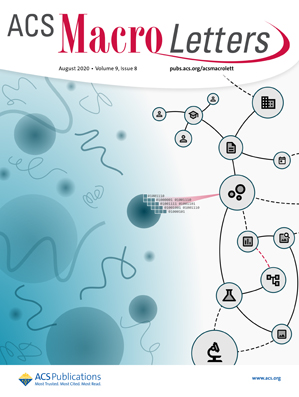甲基丙烯酸二硫化二铁金属聚合物作为水裂解和分子制氢的可持续电催化剂。
IF 5.2
Q1 POLYMER SCIENCE
引用次数: 0
摘要
本文综述了以[二铁-二硫]([2Fe-2S])为活性位点的甲基丙烯酸酯金属聚合物为催化剂的新型可持续水裂解和分子制氢电催化体系的研究进展。迄今为止,贵金属催化剂(如铂)仍然是使用水作为化学原料和质子供体的分子制氢的最佳电催化剂。然而,仍然需要使用低成本、富含土壤的材料合成高效的电催化系统来实现可持续的氢气生成。我们专注于我们最近在这一领域的工作,使用定义良好的单位点[2Fe-2S]-金属聚合物催化剂。因此,到目前为止,这些系统的产氢速率比[FeFe]-氢化酶快25倍,并且在中性pH下使用tris(羟甲基)氨基乙烷(tris)缓冲液时,与铂的电流密度相匹配,电位仅高0.2 V(法拉第产率100±3%)。综述了[2Fe-2S]-金属聚合物的分子设计和合成,并对该催化体系高效制氢的机理进行了研究。金属聚合物在碳电极表面的可逆静电吸附提高了质子和电子的转移速率,以及质子缓冲电解质(PBEs)的使用提高了质子的可用性,从而改善了总电流输出和过电位。本文总结的通过掺入金属聚合物来提高[2Fe-2S]催化剂性能的方案可用于提高电极表面其他分子电催化剂的性能。本文章由计算机程序翻译,如有差异,请以英文原文为准。
Diiron Disulfide Methacrylate Metallopolymers as Sustainable Electrocatalysts for Water-Splitting and Molecular Hydrogen Production.
We review in this Viewpoint recent progress on the development of a new sustainable electrocatalytic system for water-splitting and molecular hydrogen generation using [diiron-disulfur] ([2Fe-2S]) active site methacrylate metallopolymers. To date, noble metal catalysts (e.g, platinum) remain the best electrocatalysts for molecular hydrogen generation using water as the chemical feedstock and proton donor. However, there remains a need for the synthesis of efficient electrocatalytic systems using low cost, earth abundant materials for sustainable H2 generation. We focus on our recent work in this area using well-defined single site [2Fe-2S]-metallopolymer catalysts. Thus, far, these systems have demonstrated rates of hydrogen production >25 times faster than [FeFe]-hydrogenase enzymes and match the current densities of platinum with only 0.2 V higher potential when operating in water at neutral pH with tris(hydroxymethyl)aminoethane (TRIS) buffer (Faradaic yields 100 ± 3%). The molecular design and synthesis of [2Fe-2S]-metallopolymers are reviewed along with mechanistic studies unraveling the causality of efficient H2 production from this catalytic system. The overall current output and overpotential are improved by the reversible electrostatic adsorption of the metallopolymer on the carbon electrode surface that enhances the proton and electron transfer rates and the use of protic buffer electrolytes (PBEs) that enhance the availability of protons. The schemes summarized here to improve the performance of [2Fe-2S] catalysts by incorporation into metallopolymers may be used to enhance the performance of other molecular electrocatalysts at the electrode surface.
求助全文
通过发布文献求助,成功后即可免费获取论文全文。
去求助
来源期刊
CiteScore
10.40
自引率
3.40%
发文量
209
审稿时长
1 months
期刊介绍:
ACS Macro Letters publishes research in all areas of contemporary soft matter science in which macromolecules play a key role, including nanotechnology, self-assembly, supramolecular chemistry, biomaterials, energy generation and storage, and renewable/sustainable materials. Submissions to ACS Macro Letters should justify clearly the rapid disclosure of the key elements of the study. The scope of the journal includes high-impact research of broad interest in all areas of polymer science and engineering, including cross-disciplinary research that interfaces with polymer science.
With the launch of ACS Macro Letters, all Communications that were formerly published in Macromolecules and Biomacromolecules will be published as Letters in ACS Macro Letters.

 求助内容:
求助内容: 应助结果提醒方式:
应助结果提醒方式:


